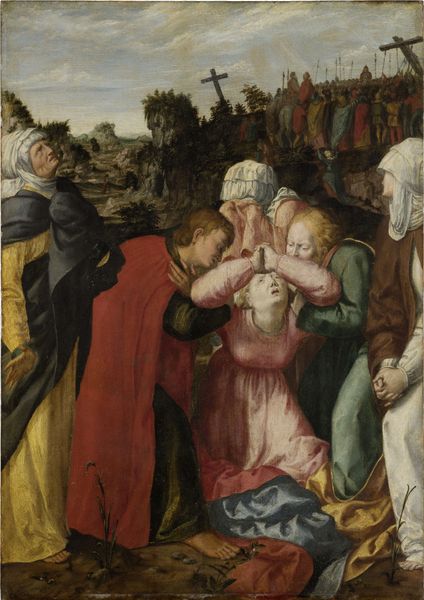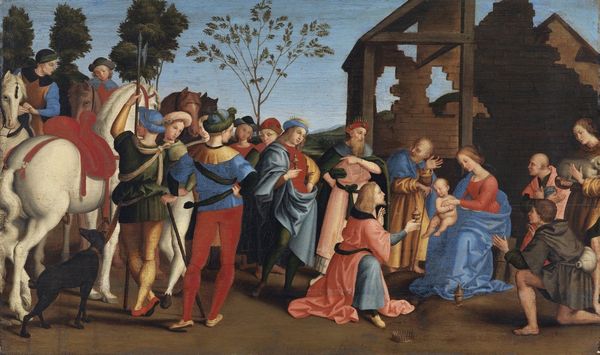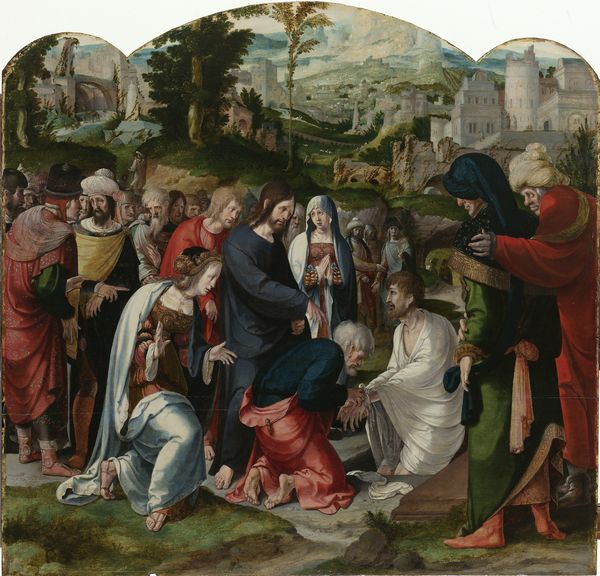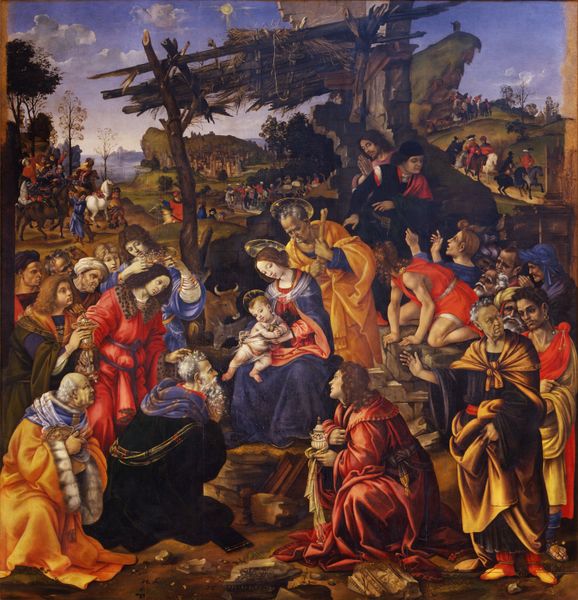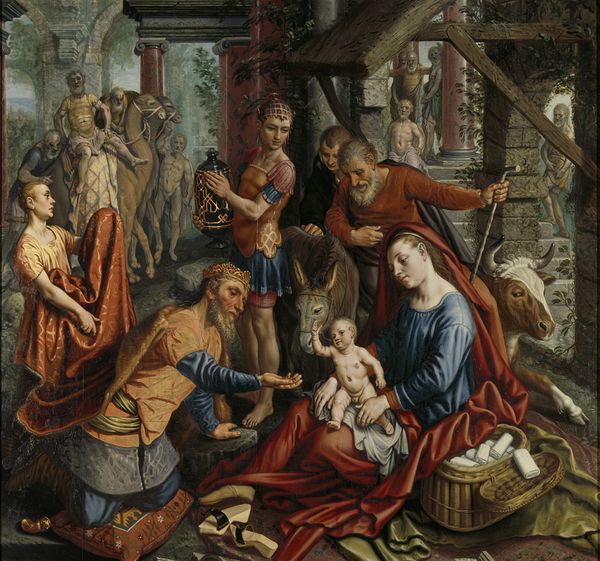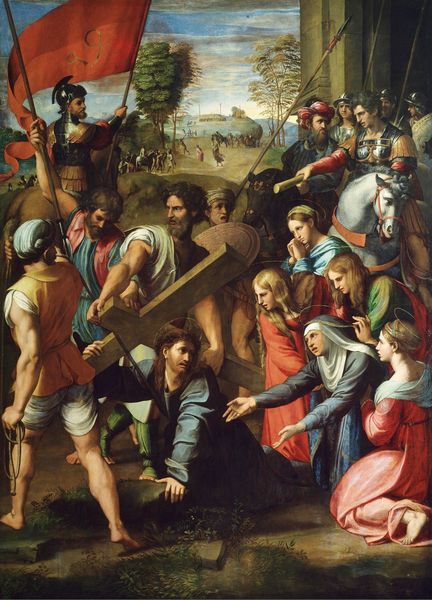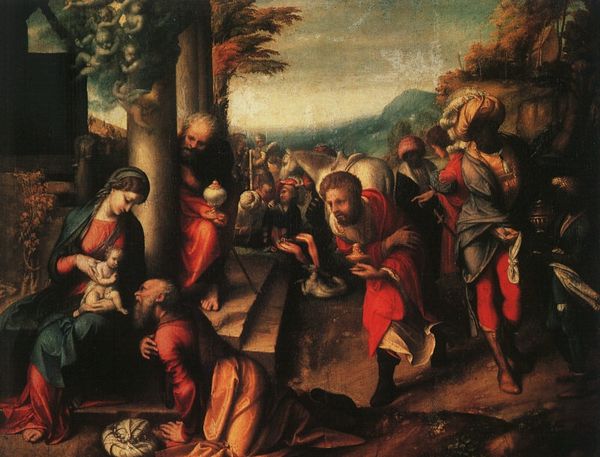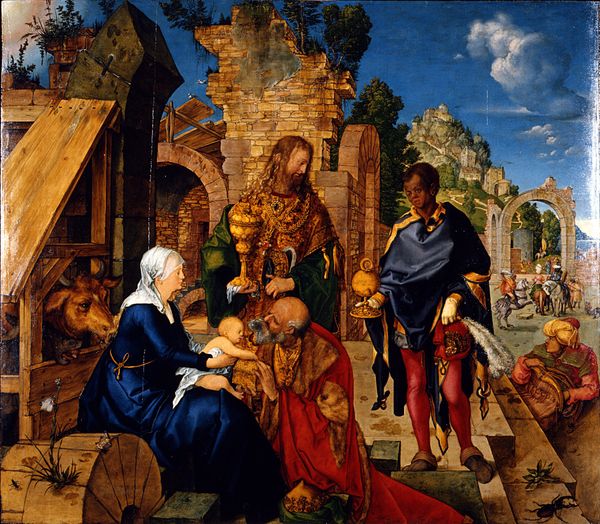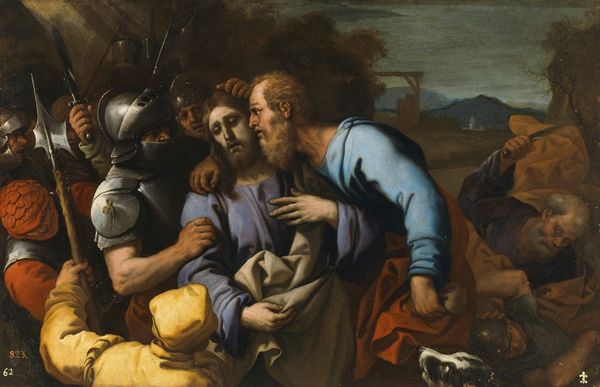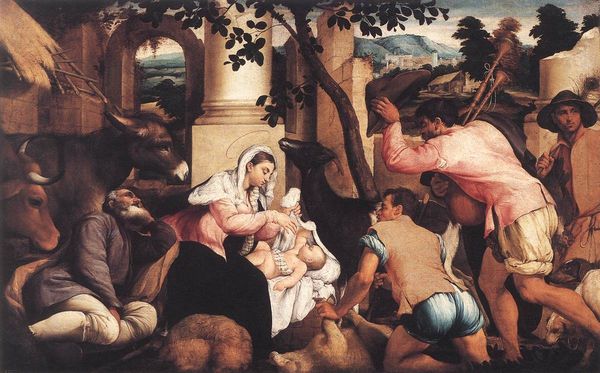
painting, oil-paint
#
portrait
#
narrative-art
#
painting
#
oil-paint
#
landscape
#
figuration
#
11_renaissance
#
history-painting
#
italian-renaissance
Dimensions: 183 x 235 cm
Copyright: Public domain
Curator: Before us is Jacopo Bassano's "The Adoration of the Kings," an oil painting dating back to 1544. It currently resides at the Scottish National Gallery. Editor: What strikes me immediately is the earthy quality, the density of the figures. It’s almost tactile, like you can feel the weave of the fabrics and the coarse texture of the stone architecture. Curator: Bassano, as a painter situated in the Venetian territories, occupied a unique position. His paintings often depict biblical scenes in a rustic, almost everyday setting. Notice the inclusion of farm animals and common folk amongst the traditional figures. This down-to-earth approach was quite novel for religious painting at the time. It blurred social lines. Editor: And it's done with such visible labor! Look at how the oil paint is layered, built up. It really emphasizes the material reality of the scene, almost celebrating the work and effort it would have taken not just to depict this holy scene but to also get there, to complete the journey! The pigments themselves, the canvas, speak volumes about 16th-century craftsmanship and patronage. How does the social standing of Bassano himself fit into this picture? Curator: Bassano worked outside the main urban centres like Venice or Florence, enjoying a patronage that included local nobles, clergy and also common folks. It granted him certain artistic freedoms, which perhaps allowed for his naturalistic rendering and the introduction of elements traditionally considered unsuitable for high art. This approach challenged academic hierarchies that prized idealization over observation of the natural world. He, after all, knew firsthand the textures and tones of rural existence, enriching traditional iconography with those aspects. Editor: It’s fascinating to see the integration of everyday material concerns—livestock, roughspun clothing, into such a revered subject. What were audiences supposed to make of this conflation of high and low? It certainly challenges the clean separation of holy and earthly domains, doesn't it? And what did Bassano's workshop look like while making this artwork? Were multiple artists working in unison to accomplish it? Curator: That is certainly one avenue of consideration, given the diverse patrons he served. While idealised or classically informed compositions may impress as demonstrations of mastery and artistry, a naturalistic interpretation also grants immediate relatability and, perhaps even, underscores themes of humility and accessibility inherent to the narrative. Editor: Thinking about this intersection has reframed how I understand it entirely. It's no longer simply a rendering of adoration but a window into the materials, production, and socio-cultural life of the time. Curator: A fresh lens, indeed, bringing out new depths within this tableau.
Comments
No comments
Be the first to comment and join the conversation on the ultimate creative platform.
